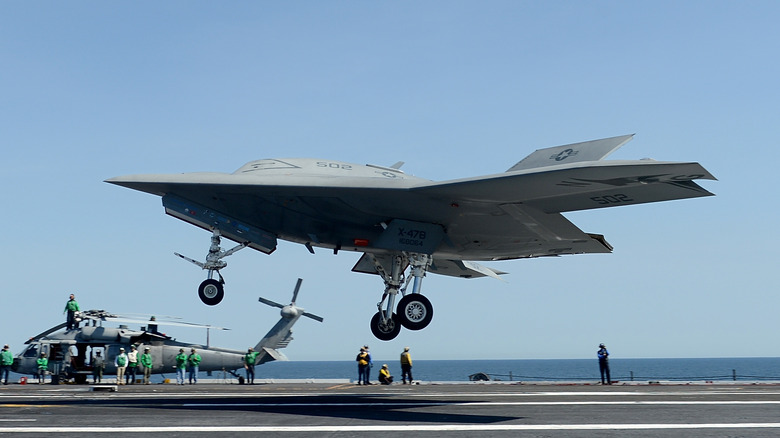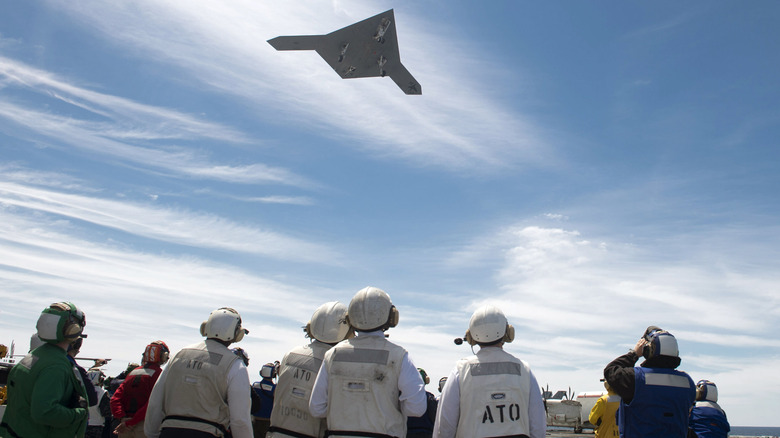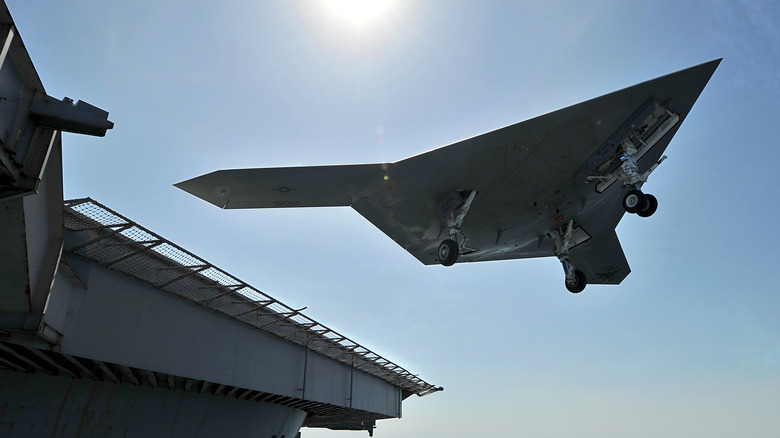Why The U.S. Navy Decommissioned The Incredible X-47B Stealth Drone
As technology has advanced, the functions, specs, and utility of drones has too. From budget craft operated by hobbyists and beginners upwards, the world of drones is a varied one indeed. The Drone Racing League is at the forefront of the technology, a high-profile competition in which headset-donning drone pilots battle to steer their craft through a window course as quickly as possible.
Of course, drones aren't simply for entertainment purposes. They've become very prominent in warfare too. So much so, in fact, that models like the MQ-1 Predator have become, according to once-BBC defense correspondent Jonathan Marcus, weapons as iconic as "the longbow used by the English archers at Agincourt in the Middle Ages or the heavily armoured tanks that epitomised the ground combat of World War Two."
The X-47B of the U.S. Navy was a particularly formidable stealth drone, but it's no longer in use by the military. Here's why.
The story of the X-47B stealth drone
Per Northrop Grumman, the X-47B was created under a 2007 contract with the U.S. Navy. It was a time when unmanned craft were beginning to show burgeoning potential, and the Navy was looking to incorporate such a craft into its forces.
The initiative, titled the "Unmanned Combat Air System (UCAS) Carrier Demonstration," wanted just that: a plane that could launch and relaunch from an aircraft carrier, refuel while in action, and more — all without a pilot. Such a compact and sophisticated craft could offer dramatically increased visibility into dangerous areas, while removing risks to pilots. Northrop Grumman took this brief in stride and set out to deliver.
The craft that would be the X-47B. It was unlike anything seen before. Popular Science declared it "the world's first autonomous warplane," and though only two X-47Bs were completed, they demonstrated through vigorous trials the fully capabilities of drones. As demonstrated by the U.S. Navy on YouTube, it strutted its stuff in both takeoff and landing from the USS Theodore Roosevelt in August 2014.
The very next year, though, the Unmanned Combat Air System demonstration project ended.
What happened to this incredible drone?
As is so often the case with technology, things can take unexpected turns. During development or afterwards, the research can turn out to be more useful elsewhere. This, essentially, was the case with the X-47B.
The aircraft was, as the title of the Unmanned Combat Air System Demonstration project suggests, precisely that: a demonstration, a proof of concept. At this, it was a great success. Automated Aerial Refueling was and remains quite the undertaking, and the X-47B accomplishing it without a pilot was a world first. The knowledge gained from these remarkable craft was taken in a slightly different direction, as Northrop Grumman notes that they were designed with the intent of "setting the stage for the development of a more permanent, carrier-based fleet of unmanned aircraft.."
The X-47B and UCAS-D project gave way to the Carrier-Based Aerial Refueling System research, through which the MQ-25 Stingray was ultimately developed.
The X-47B, then, was not operational for very long. So effective was it, however, that the aviation marvels in the field that followed may never have been developed without it.


